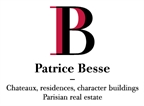An 18th-century dwelling, its outbuildings and 1.2-hectare grounds 20 kilometres east of Toulouse, surrounded by the rolling topography of the Pays de
An 18th-century dwelling, its outbuildings and 1.2-hectare grounds 20 kilometres east of Toulouse, surrounded by the rolling topography of the Pays de Cocagne.
Located just to the east of Toulouse, within a region that was once known as the Pays de Cocagne, in reference to the dye produced from the processing of the pastel flower, which would eventually become a symbol of prosperity, the property is in the centre of a small village in the Lauragais countryside, characterized by its hills and the tranquillity of the Canal du Midi. With its green and gold Tuscan accents, this area is characteristic of the region southeast of Toulouse where cereal and sunflower crops predominate. Located nearby are shops and services, while the Toulouse metropolis is approximately 30 minutes away by car and, when the future Toulouse-Castres motorway is put into service, the access of which is 4 kilometres away, the "pink city" will soon feel even closer.
Built in the 18th century, before being modified and enlarged subsequently until the tower was completed in the 20th century, the imposing edifice, with walls incrusted in Tarn stones and topped with gable, three-sided or hipped tile roofs, overlooks the landscape and was once a parish property. Embedded within the grounds, the village's church, with its belfry wall characteristic of this part of the Occitanie region, witnessed many religious conflicts before it was restored in the 19th century. With understated ornamental décor, the house stands out thanks to its terracotta details such as its dentil cornice, moulded stringcourses, window/door surrounds and slightly projecting windowsills. In addition, the openings for the windows and doors, rather symmetrical, are mostly rectilinear, while some are topped with arches or d-rop arches and are protected, in large part, by red-painted wooden shutters.
The overall edifice extends horizontally from east to west and includes the main building and a tower in its centre, with five lovely bedrooms and five bathrooms, as well as a number of outbuildings, including a former stable, which has preserved its pebble floor and includes an attic level, a former garage, a summer kitchen, a furnace room and, continuing on from there, an immense three-door garage. With a total floor area of approximately 175 m2, the outbuildings' wooden rafters and tile roofs were all redone in 2009.
Further on the right after entering the property, grounds with a surface area of 1.17 hectares extend towards the northwest and include a multi-century cedar tree and a saltwater swimming pool.
The residenceIts main entrance was once located on the south side, opening onto a square that gave access to the church and cemetery. Pilasters topped with ionic capitals frame this entrance, breaking with the general simplicity of the building's ornamental decoration. The house's entrance now opens onto the billiards room located on the ground floor of the tower and the wing extending from this point to the southeast houses the living spaces: kitchen, dining room, living room, library and office, the whole representing an inhabitable surface of approximately 230 m². Upstairs are the bedrooms, with a total of six, a projection room and four bathrooms, with an inhabitable surface of 260 m². The tower rising above the billiards room provides two additional floors with five more bedrooms and a bathroom, comprising a surface area of approximately 110 m². Lastly, a vast attic covers the entire length of the building. The outbuildings include a stable with a pebble-paved floor and an additional attic space. Adjacent to this is a former garage, a summer kitchen, furnace room and a garage with room for three vehicles. The outbuildings' easement is approximately 175 m² and their wooden rafters and tiled roofs were redone in 2009.
The ground floor
The front door ...


